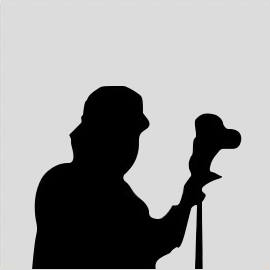1 Like
Hotel Hafnia situated in the heart of the world’s smallest capital, within walking distance of the harbour and the historical part of town. History In the 30's and 40's Christian Restorff rented out rooms on their family estate on a yearly basis. This ceased in 1950 when Mr. Restorff decided to demolish the estate and build a hotel in its place. In 1951 the hotel opened and was named Hafnia - which is latin for "harbour". All through the 50's, 60's and 70's Hotel Hafnia expanded into its present position as one of the foremost hotels in The Faroe Islands. Mr. Restorff insisted on Hotel Hafnia being unsurpassed by Faroese standards. He was successful in acheving this. In 1988 Mr. Restorff's two sons, Johan & M.C., took over the hotel with Johan as new manager. Johan carried out a total renovation as one of his first tasks as manager. Hotel Hafnia was now meeting and fulfilling international standards. Johan and M.C. carried on managing Hotel Hafnia as well as their father, Mr. Restorff. Professional service was always their goal - they particularly wanted the guests to experience the feeling of being welcomed at Hotel Hafnia. in January 2005 Hotel Hafnia changed ownership. The Restorff family no longer own and run the hotel, though the staff is still the same. The new owners are Mr. Osmund Justinussen and his sons Tummas & Gunnar together with Per Sævik from Norway.





Location and size Situated in the heart of the Gulf Stream in the North Atlantic at 62°00’N, the Faroe Islands lie northwest of Scotland and halfway between Iceland and Norway. The archipelago is composed of 18 islands covering 1399 km2 (545.3 sq.miles) and is 113 km (70 miles) long and 75 km (47 miles) wide, roughly in the shape of an arrowhead. There are 1100 km (687 miles) of coastline and at no time is one more than 5 km (3 miles) away from the ocean. The highest mountain is 882 m (2883 ft) above sea level and the average height above sea level for the country is 300 m (982 ft). Climate The weather is maritime and quite changeable, from moments of brilliant sunshine to misty hill fog, to showers. The Gulf Stream encircling the islands tempers the climate. The harbours never freeze and the temperature in winter time is very moderate considering the high latitude. Snowfall occurs, but is shortlived. The average temperature ranges from 3°C in winter to 11°C in the summer. In sheltered areas, the temperature can be much higher, but the air is always fresh and clean no matter what the season. Population The population is 48.520 (1st April 2008). About 19,400 people live in the metropolitan area which comprises Tórshavn, Kirkjubøur, Velbastaður, Nólsoy, Hestur, Koltur, Hoyvík, Argir, Kaldbak, Kaldbaksbotnur, Norðradalur, Syðradalur, Hvítanes, Sund, Kollafjørður, Signabøur and Oyrareingir, while about 4,700 people live in Klaksvík, the second largest town in the Faroe Islands. Form of Government Since 1948, the Faroe Islands have been a self governing region of the Kingdom of Denmark. It has its own parliament and its own flag. It is not, however, a member of the European Union and all trade is governed by special treaties. Languages Spoken Faroese is the national language and is rooted in Old Norse. Nordic languages are readily understood by most Faroese, and English is also widely spoken, especially among the younger people. Religion Religion plays an important part in Faroese culture and over 80% of the population belong to the established church, the EvangelicalLutheran. 10% of the population belong to the Christian Brethren (Plymouth Brethren). Industry The fishing industry is the most important source of income for the Faroes. Fish products account for over 97% of the export volume. Tourism is the second largest industry, followed by woollen and other manufactured products.